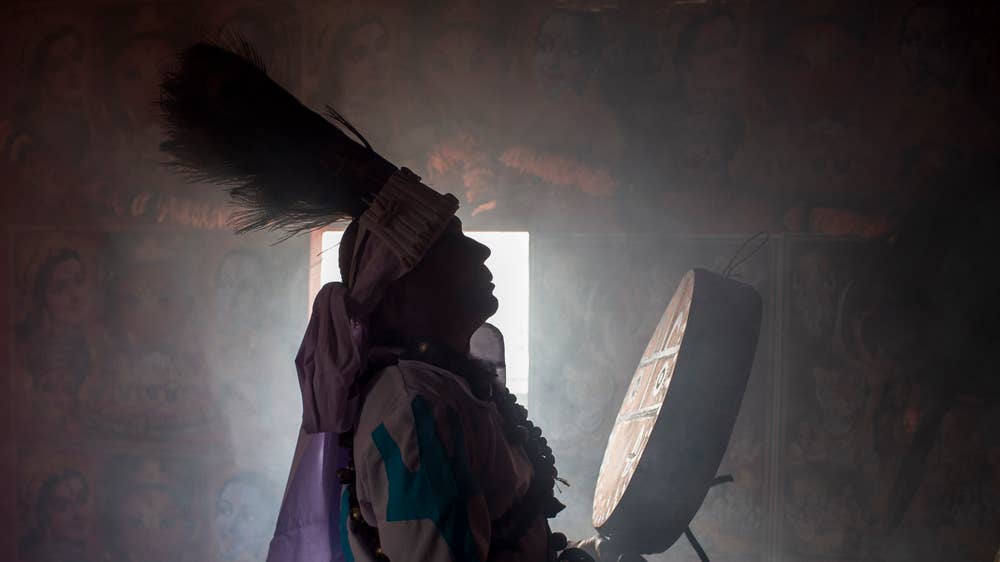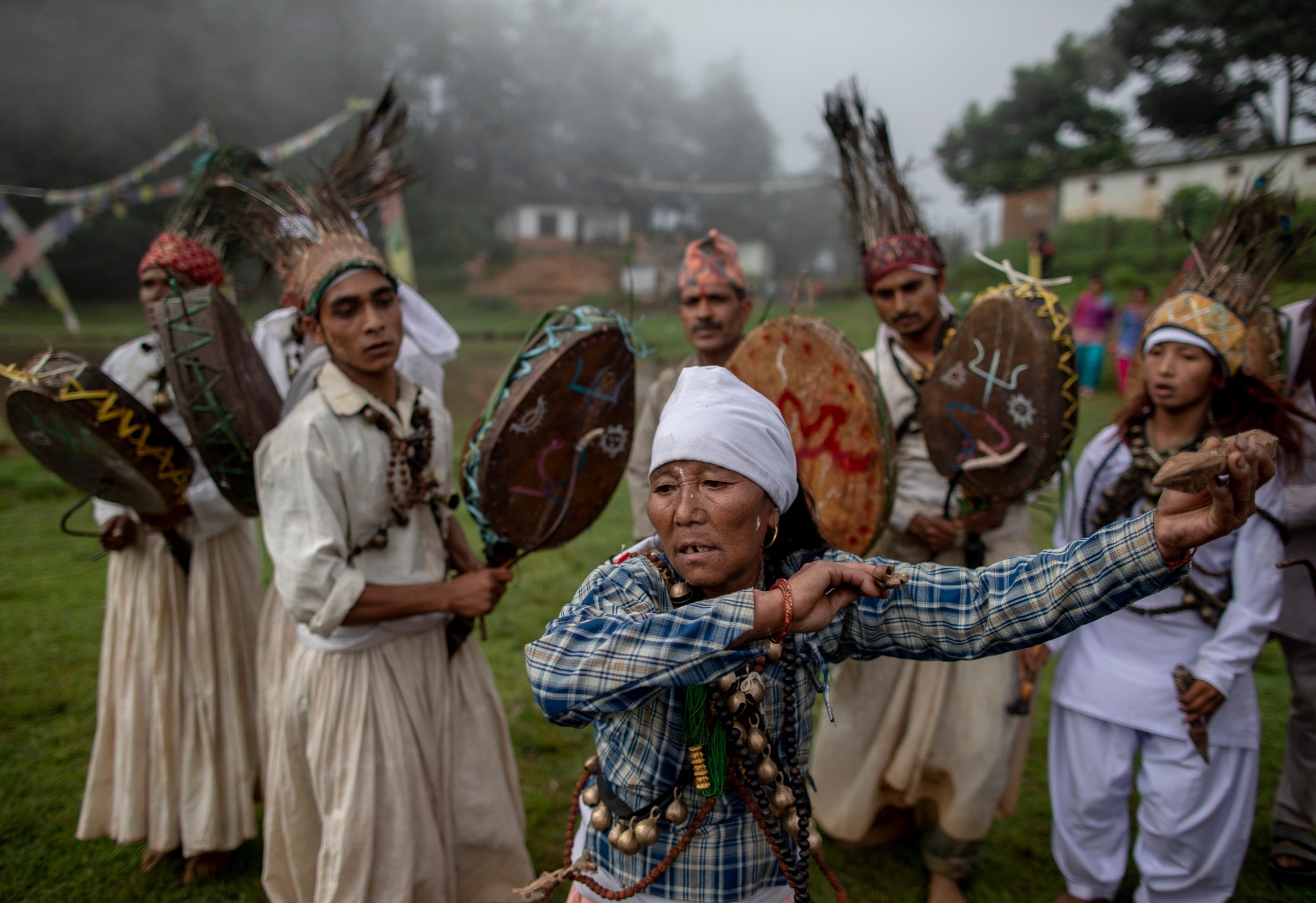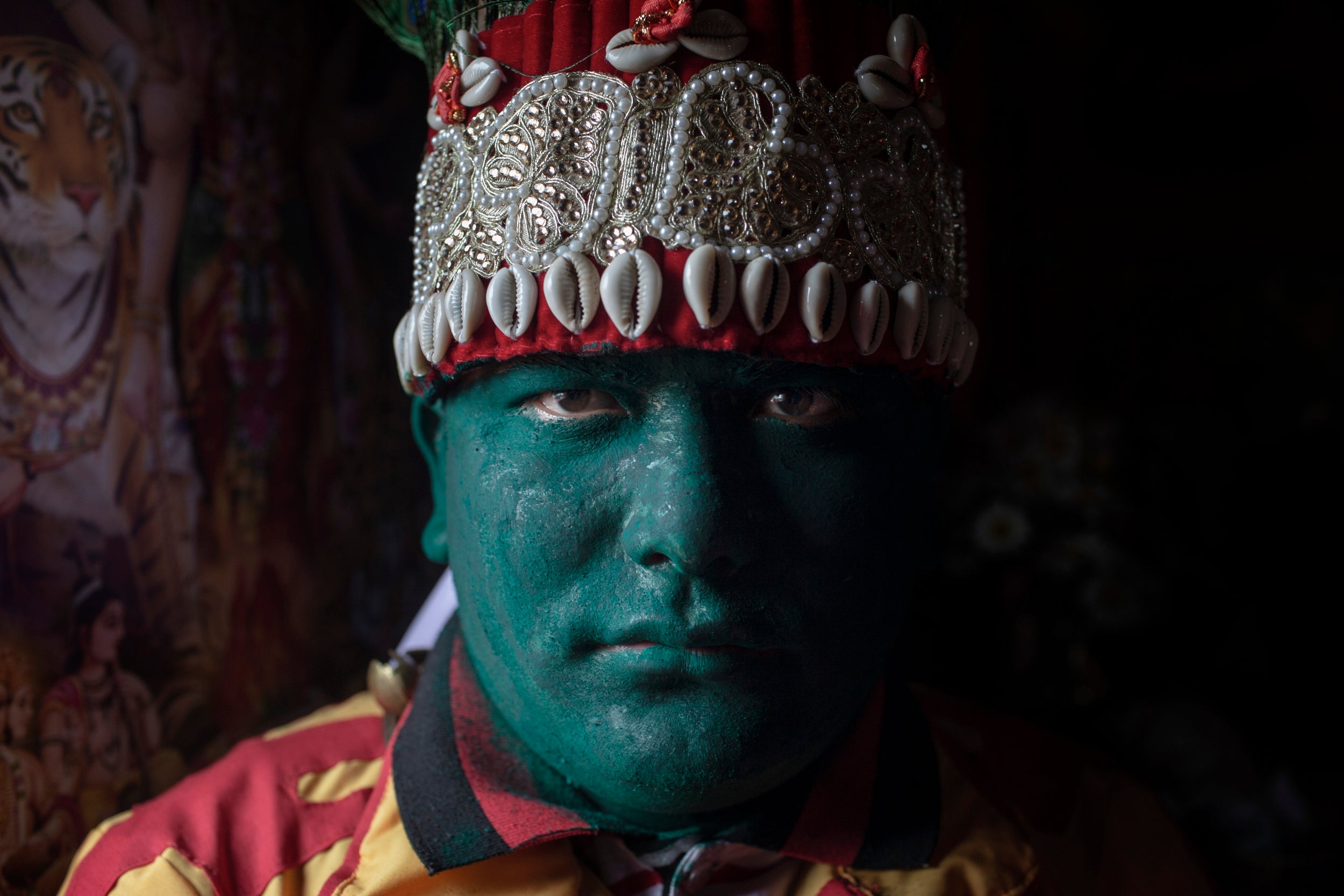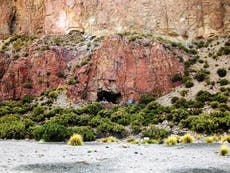Shamanism in Nepal: Inside the practices and spiritual world of Jhakri
Photos reveal the rituals and tests that aspiring shamans must complete
Narendra Shrestha
In photos: Shamanism in Nepal
Show all 15



“Jhakri” is the Nepalese word for shaman; in Nepal it refers to practitioners of the ethnic groups of the Tamang, Magar, Rai, Limbu and Gurung people.
Chet Bahadur Thing, 26, a renowned shaman, felt a connection with the spiritual world, and learning from his grandfather, he started practising shamanism at the age of 11. He is now considered a guru in his community. He says: “During ancient times, when there was no medical science or hospitals, shamans used to treat the patients in our village. Even now, people with spiritual problems or body pain visit us for healing or treatment or when doctors cannot heal them.”
Eighteen-year-old Sheela Lamichhane is a student of management in Kathmandu and a practising shaman. Ever since her older sister got severely ill and then was treated by a shaman she has been fascinated by those who practice it.
She even became possessed herself: “I used to run in the middle of the road barefoot like some crazy girl,” she recalls. Her parents took her to Thing, who, after purging the evil spirit, began her shaman training. She passed several tests, including the most important, a seven-day fasting ritual called gufa and a “holy river meditation”.
Gufa typically refers to a cave where aspiring shamans attend fasting and classes over the course of a week. They have to perform puja, a Hindu act of worship, chant mantras, play drums and dance in the middle of the night over burning ashes or coals.
Read more

Hallucinogenic drugs found in 1,000-year-old shamanic pouch
Shamans believe that they will gain power or energy from God if they are able to dance barefoot over the burning coals. After the completion of this first test, shaman practitioners must go to a holy river for meditation. Half submerged in the river waters, they have to chant mantras and meditate for more than three hours. This ritual is meant to build confidence and provide energy to become a shaman, but not everyone can pass this test.
Lamichhane attends her regular classes at college, before treating patients at home with her parents’ assistance during the afternoon. She will need to pass more tests to get fully certified as a shaman, which should take about two more years.
“I had a dream to be a doctor when I was 10 years old and today people know me as a witch doctor. I feel like I was destined,” she says.
EPA
Shamans believe that they will gain power or energy from God if they are able to dance barefoot over the burning coals. After the completion of this first test, shaman practitioners must go to a holy river for meditation. Half submerged in the river waters, they have to chant mantras and meditate for more than three hours. This ritual is meant to build confidence and provide energy to become a shaman, but not everyone can pass this test.
Lamichhane attends her regular classes at college, before treating patients at home with her parents’ assistance during the afternoon. She will need to pass more tests to get fully certified as a shaman, which should take about two more years.
“I had a dream to be a doctor when I was 10 years old and today people know me as a witch doctor. I feel like I was destined,” she says.
EPA


No comments:
Post a Comment